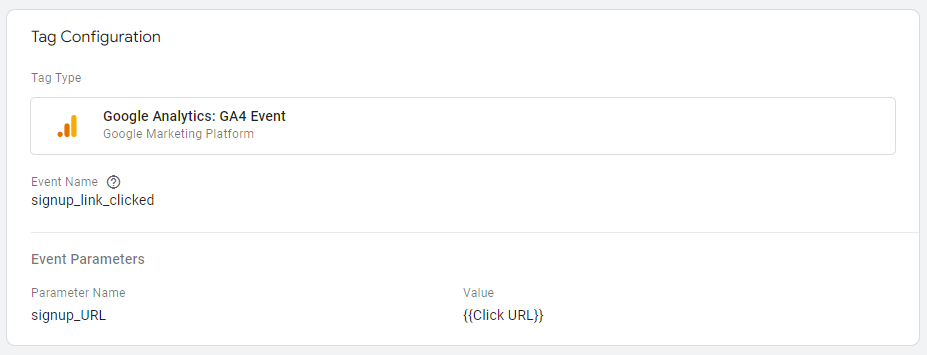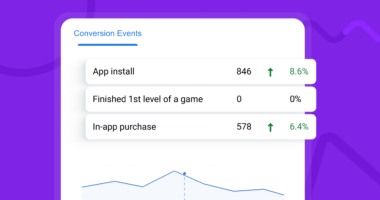While everyone dreams about an analytics software that automatically adjusts to every business type and model, the reality is that a marketer needs to spend hours or days just to make sure that they catch all important data.
There is no fully automatic tracking software with just one giant ‘Analyze & Optimize Now’ button in the middle nor ‘one size fits all’ solutions. Businesses differ from one to another and unfortunately, so do setups in analytics platforms.
Luckily, Google Analytics and other similar platforms give its users plenty of opportunities to customize the way the software operates. One of the ways to do so is setting up custom dimensions.
The following article will go over benefits and the setup process of custom dimensions in Google Analytics 4.
What are custom dimensions?
Custom dimensions are dimensions that you name and define by yourself. A dimension is any piece of information that is attached to an event or user (in Google Analytics 4). This information includes city name, device characteristics, menu items, and so on.
It is important to know that Google already offers many dimensions that can be set by default and you should only set up custom dimensions if the dimension you need is not available by default. The list of all available dimensions can be found on this support page.
Custom dimensions glossary

To make sure we are on the same page, please go through the glossary of important terms related to custom dimensions.
- Custom definition – an aggregative term in Google Analytics’ 4 admin page for custom dimensions and custom metrics.
- Dimension – An attribute of an event or a user registered in Google Analytics 4. It is a text-based descriptive type of information (for example, item category)
- Event parameter – a piece of information that accompanies an event (for example, form ID). Event parameters set in Google Tag Manager need to be registered as custom dimensions to be viewable in reports.
- Metric – a numeric measurement such as percentage or ratio that you can perform mathematical operations on (for example, number of products purchased).
- Scope – scope is the context for attaching a custom dimension. In Google Analytics 4, this can be either an event or a user.
- Variable – a variable in Google Tag Manager is a placeholder for a value that will be populated when the code is run. You can use variables when setting up event parameters. Variables are either built-in or can be custom.
Custom Dimensions in Universal Analytics vs Custom dimensions in Google Analytics 4
Google’s last versions of their proprietary analytic platforms, Universal Analytics (or Google Analytics 3) – which will sunset on the 1st of July – had a different approach to gathering data and also to custom dimensions.
Universal Analytics had 4 scopes for custom dimensions:
- User
- Session
- Hit
- Product
This is no longer the case. In Google Analytics 4, only 3 scopes are supported:
- Event
- User
- Item
Limits of Custom Dimensions

Depending on the scope, you can create the following number of custom dimensions:
- Event – 50
- User – 25
- Item – 10
- All custom metrics – 50
To check your quota, in Google Analytics 4 go to Admin / Custom definitions and click Quota information. If you ran out of custom dimensions, archive some custom dimensions and/or metrics.
Benefits and use cases of Custom Dimensions
The line of argumentation for custom dimensions is that they can enrich your data with additional details. As a drawback, custom dimensions need careful setup and make reading your data more difficult, especially for outside people or newcomers.
Consider the following scenario: you want to know how many people have signed up for a newsletter. This is rather easy to track. But here’s the catch: you have several places with a signup link. You may have it on a dedicated signup page or in the footer of every page. Distinguishing between these two ways may indicate where you should concentrate more effort.
In this example, you can use a custom dimension to pass information about which signup link was clicked. To do so, you need to set a custom event for newsletter sign up in Google Tag Manager.
Setting up Custom Dimensions
Custom dimensions are set using event parameters set in Google Tag Manager. So, as a first order of business, you need to be sure that you have set custom events tracking.
Firstly, you need to go to Google Tag Manager. We will create a custom event there. A custom event in GTM consists of a tag and a trigger. Both of them use variables (either custom or built-in ones) to pass additional information (in the case of event) or launch a trigger at the correct moment.
Set up custom variables
Check if a custom dimension is based on one of the built-in variables. Variables contain information such as names of the elements of the web page. Use Google Tag Manager’s preview mode to check for the names of these elements. If necessary, create a custom variable that you will use later when creating a custom event.
Set a custom event in Google Tag Manager

You can start by creating a trigger in GTM. This defines when a tag should be launched. A trigger may be:
- Link click
- Page scroll
- Item purchased
And so on. You can use variables to narrow down a trigger to make sure it fires only after a specific link has been clicked. For example, when a link contains specific text.

Now move on to creating a tag. Create a ‘Google Analytics: GA4 event’ first. You will have to provide your Measurement ID – a Tracking ID in Google Analytics 4. Name your event however you want.
To pass additional data, you need to set up Event Parameters. Firstly, provide a name for your parameters and then use variables to set up passing necessary information.

These event parameters will become custom dimensions in Google Analytics 4.
Save the tag and head to GA4.
Registering a custom dimension in Google Analytics 4
The last thing to do is to register an event parameter from Google Tag Manager as a custom dimension in Google Analytics 4. Go to Admin/Custom definitions and click the ‘Create custom dimension’ button.
Provide the event parameter name (it can be any name) and select the scope. Lastly and most importantly, provide the same event parameter name as in GTM.
Now the only thing left to do is to wait 24-48 hours for all the changes to be accounted for and data collected.
A different approach to event collection
Google Analytics 4 offers a very detail-heavy approach to data analysis. You can dive into countless cross-references in its reports and spend hours splitting hairs.
If you need a more performance-oriented approach, try Voluum. While it doesn’t offer you the option to comfortably analyze clicks on hundreds of links, it allows you to quickly track and test vast numbers of landing pages and offers.
If you work at scale and juggle hundredths of pages to see which one resonates with your audience the most, then Voluum should be a good alternative to Google Analytics 4. The latter platform doesn’t offer a quick option to switch pages, reroute traffic to more profitable ones. It is more suited for fine-tuning a single page than to test a hundred.
Voluum is a privacy-focused ad tracker that is used by marketers and agencies on its own or along with Google Analytics. If you are wondering how Voluum actually stacks up against Google Analytics 4, check out our comparison page.




